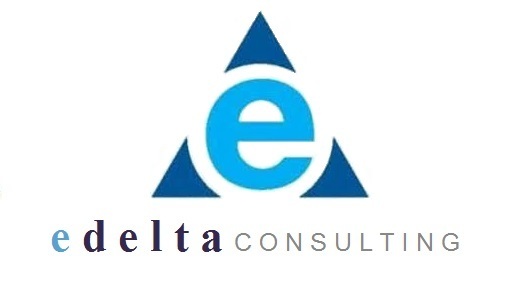IT Boot Camp for CISA Exam Candidates
Training Duration: 1 day
Training Delivery Method: On-site, instructor-led course; or online, instructor-led course
Prerequisites: Internal audit or IT audit experience
What Problem Does This Training Help Solve?
Provides training to help attendees who are weak in IT understand Information Technology concepts, hardware, software, architectures, applications, facilities, and other aspects.
Who Should Attend?
This boot camp is especially tailored toward those candidates who are preparing for the CISA® exam but do not have a very strong background in IT or need a refresher in IT.
Course Material:
There will be no handouts for this class, since this class is customized based on the attendees’ backgrounds. The instructor will make extensive use of blackboard, whiteboard, and flip charts and attendees will be taking notes.
Course Syllabus:
Syllabus will vary depending upon attendees’ backgrounds. The objective of this course is to ensure that CISA® exam candidates have good understanding of IT so that they feel comfortable understanding and answering CISA® exam questions.
Possible topics to be covered:
Operating systems, Z-OS, DOS, VM, UNIX, Solaris, HP-UX, AIX, Linux, Hardware, storage controllers, DASDs, RAM, disk drives, channels, EMC, EVA, Clariion, Sharks, FEP, NCP, VTAM, SNA, TCP/IP, CICS, other TP monitors, Tuxedo, DBMS, DB2, UDB, Oracle, Sybase, Legacy (Adabas, IDMS-R etc), TP monitor/DBMS interaction, relational systems, hierarchical systems, network-based DBMS, UNIX hardware, WinTel based hardware, SUN, HP, IBM, Thin clients, UNIX to Legacy connectivity, telecom vs. locally attached links, ISDN, Modems, digital modems/csu/dsu, DSL, VDSL, SMDS, DBDQ, Metro network, copper cable, fiber optic network, coax cable, UTP, STP, exchange servers, Blackberry servers, 802.11/WiFi, 802.16 WiMax, token ring, ethernet, CSMA/CD, CSMA/CA, gigabit ethernet, OSI model, layers of OSI, Windows XP, application programs, application clusters, SRDF, XPC, satelite communications, Microwave communications, servers vs. storage devices, SAN, NAS, RAID devices, languages, Cobol, C, C++, Fortran, object technology, cable modems, compliers, link editors, loaders, AI, Neural Networks, Natural Language Processing, SNMP, TMP, Open-View, LTO tape libraries, robotic tape management, electronic vaulting, raised floors, smoke detectors, FM-200, Type 1/2/3 fires, water damage prevention, motion detectors, security cameras, synchronous and asynchronous replications, LANs, WANs, MANs, PANs, shared devices, integrity, confidentiality, availability, high availability systems, DR/BCP, cluster controllers, third party software’s, SAP, Peoplesoft, Oracle Financials, Control issues for ERP systems, BPR, BPO, ITIL, IT-Service Management, Cobit, BS7799/ISO17799/ISO27001, SMTP, cryptography, SCADA control systems, PBX, CTI, call centers, VRS, cellular networks, MSC, BTS, BSS, mediation devices, file servers, print servers, SLAs, ESCROW agreements, RFP, RFI, OSPF, routers, switches, CISCO, transport layer, application layer, physical layer, RJ11, RJ45, NIC, wireless networks, IEEE standards, DNS, DNS push, Intranet, Internet, Extranet, EDI, EFT, VPN, tunneling, Kerberos, dial in authentication, Firewalls, VirusWall, DMZ, Internal vs, External DNS, private Intranet addresses, digital signatures, PKI, triple DES, FTP, anonymous FTP, cryptography, public and private keys, asset management, configuration management, help desk, Remedy, change vs. problem management, policies, procedures, guidelines, and standards, CISO, CSO, identity management, principles of biometrics, EMP threat, data integrity, types of backups (full, incremental, differential, synthetic), split processing, honey nets, honey pots, middleware, messaging and queuing systems, MQI Series, transaction logs, remote journaling, forward recovery, backouts, checkpoints, commit and rollback, file systems, integrity issues in file systems, various forms of attacks, different job functions and their interaction (SA, DBA, Application developers, QA, Security Administrator, operator, librarian, CISO, LAN Administrator, change manager, help desk personnel), job conflict of interest, typical IT department management structure.
Application Service Provider (ASP) and Service Level Agreements, Large Data set Management, Server Virtualization, High Availability and Clusters, File Systems, Blade Servers, Workload Scheduling and Balancing, Performance Management, Capacity Planning, Managing the Emerging Utility/Grid Computing Infrastructure, Network and Communications Management: Network Operating Systems, Local Area Networks, Wide Area Networks, Metropolitan Area Networks, Storage Area Networks, Voice Over IP, Carriers, Service Providers, Wireless, Firewalls and Security, Convergence of Data/Voice/Video, Protocol Standards, High Availability and Resiliency, Bandwidth and Service Level Agreements, Networked Server and Storage Management: Server Consolidation, Storage Area Networks, Network Attached Storage, Content Addressed Storage, Data Migration and Management, Scalability, Interoperability, Disaster Recovery and Business Continuity, Information Life cycle Management, BladeServers, Enterprise Security Management: Identity Management, Directory Services, Authentication, Federation, Governance and Policy Deployment, Standards, Risk Management, Outsourcing, Return on Investment (ROI) and Total Cost of Ownership (TCO),
Managing Deployment of Emerging Technologies and Standards: Procurement/Actual Products, Project Management, Implementation, Education, Management Policies, Long-Term Management and ROI Expectations, virtualization, SOAP, and a lot more.
